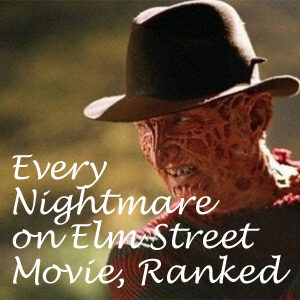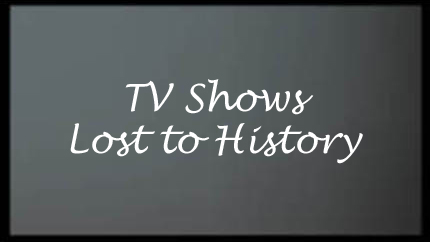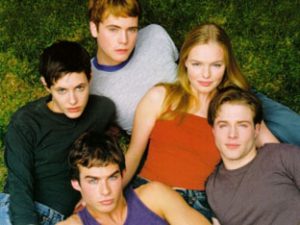Perhaps more so than any other TV show lost to history, “Young Americans” (2000, The WB) benefits from a rewatch. Although I watched the whole eight-episode run in the summer of 2000, I never embraced it.
It had four things working against it:
- Main character Will Krudski (Rodney Scott) was introduced on “Dawson’s Creek” as a bland childhood friend of Pacey’s;
- The heavy Coca-Cola promotions and the generic title made me wonder if this was a TV show at all, or rather some sort of long-form advertisement;
- A more meaty (in my estimation) teen show, “Higher Ground,” also aired that summer, and it got all my love; and
- Two storylines struck me as edgy only for the sake of shock value: Jake (Katherine Moennig, later of “The L Word”) is actually a girl, and new lovebirds Bella (Kate Bosworth, later of “Blue Crush”) and Scout (Mark Famiglietti) learn they are siblings.

“Young Americans” (2000)
WB, 8 episodes
Creator: Steve Antin
Stars: Mark Famiglietti, Kate Bosworth, Rodney Scott
Drawing from the Bard
Although it has never been released on DVD, “Young Americans” – created by Steve Antin, who has not helmed any other TV shows – has earned a tiny but outspoken cadre of appreciators who point out its hidden merits.
I was oblivious to this on my first viewing, but “YA” draws from Shakespeare, whom Finn (Ed Quinn) – the lit teacher at New England private high school Rawley Academy – calls his favorite writer.
The web tells me cross-dressing was a common element in the Bard’s works, namely “The Merchant of Venice,” “As You Like It” and “Twelfth Night,” as were incestuous relationships, notably in “King Lear” and “Pericles.”
The Shakespearean influence gives historic weight to go with the surface appeal of the unusual relationships between Jake and Hamilton (Ian Somerhalder, later of “Lost”) and Bella and Scout.
Breakthrough gender-nonbinary character?
Entertainment Weekly recently stated that “Billions” and “Degrassi: Next Class” are the only TV shows to feature gender-nonbinary characters (people who don’t self-identify as male or female), but one could argue “YA” got there ahead of its time. Granted, it did so in a coded fashion, and probably by accident.
Strictly speaking, Jake/Jacqueline identifies as her biological gender, and she is merely disguising herself as a boy in order to draw attention from her emotionally distant mom.
However, there might be more to it than meets the eye, because when her mom visits in “Winning Isn’t Everything” (episode 5), Jake goes to great lengths so her mom only sees her as a girl and doesn’t see the rowing competition (Jake is the Rawley Prep coxswain) where she is a “boy.”
By the time of the finale, “Will Bella Scout Her Mom?” (8), Jake embraces being a girl like its a newfound freedom. Perhaps Antin is tiptoeing into the realm of transgenderism but is subconsciously held back because of the norms of the time, leading to a weird – albeit watchable – character arc.

Star-crossed siblings?
There’s not as much to break down with the Bella-Scout relationship, except to say that it’s a particularly awkward way of presenting a star-crossed romance.
They fall in love at first sight in “The Beginning” (1), but learn they are siblings at episode’s end – Bella is the biological offspring of her mom and Scout’s dad, according to Bella’s non-biological dad. That’s proven false in the finale, but only the audience is privy to the revelation.
The way “YA” draws upon Shakespeare and poetry – the plot of “Free Will” (7) hinges on Will writing a poem for his loved one, but she believes its from his romantic rival, Ryder (“Sons of Anarchy’s” Charlie Hunnam) – sets it apart from other teen shows of the time.
But I and probably many other viewers didn’t catch the literary allusions. What’s more evident is that “YA” – unlike “Dawson’s Creek,” from which it is awkwardly spun off – has zero movie or TV references. Even “Kiss and Tell” (3), set at a drive-in theater, features an old, unnamed black-and-white movie.
Old-school soundtrack
The music also leans older. A student references Macy Gray’s 1999 hit “I Try” in Finn’s poetry class, “YA’s” theme song is the bouncy “Six Pacs” (2000) by The Getaway People, and Hamilton has a Third Eye Blind poster.
But the soundtrack’s most prominent artist is 1960s-’70s British folk legend Nick Drake, who would later get a significant posthumous popularity boost thanks to “Garden State” (2004). Drake’s music is the fabric of “YA”; the show would lose 50 percent of its appeal without it.
Although it’s undeniably set in 2000, “YA” feels appealingly out of time. Antin was reportedly inspired by encountering teenagers working the pump at a gas station on a visit to Massachusetts (“YA” was filmed in Maryland, but it’s set in New England).
In the town of New Rawley, we get Bella’s old-fashioned gas station plus the town-league baseball team, on which Will’s old friend Sean (a pre-“Gilmore Girls” Matt Czuchry) plays. Rawley Academy – on “the rich side of town” – is likewise traditional, with its common room, dorms, classic fashions, and the splitting of boys and girls into separate campuses (although they intermingle in some classes).
One of my favorite memories from grade school is when teachers would hold class outside because the weather was nice, and “YA” taps into this notion, as all of the classes are outside. Finn doubles as the rowing coach, so his literature lessons are held on the docks or in the boats in the middle of the lake.
End of era of innocence
These lessons tend to be relaxing rather than pressure-filled (although Will fears losing his scholarship for not being able to cut it), and indeed, “YA” is leisurely paced. The final episode is a reverse “American Graffiti,” as all six main characters end up on an impromptu road trip to Bella’s mom’s place on the final day of the summer session before going their separate ways.
These throwback elements make “YA” more innocent than other teen shows of the time, notably “Dawson’s Creek.” The fact that both Dawson and Will are self-analytical allows me to accept that “DC” and “YA” are set in the same universe, but Will is more optimistic and less angst-ridden. His voiceover narration is contentedly wistful as he looks down on his own time as a 16-year-old as if from the future.
In 2017, we now have kids turning 16 who have lived their whole lives in a post-9/11 world with boundless information at their fingertips but also a decreasing sense of what privacy means and less opportunity to make mistakes without harsh consequences.
I don’t pretend that “YA” rises above genre conventions, because most of the situations (schoolwork, asking a girl to the dance) are what you’d find on any teen drama, but it does have that other layer to it. Viewed through today’s lens, “Young Americans” is an ephemeral final chapter of the era of innocence.
It’s sadly appropriate that the show was never preserved with a DVD release.

This blog post is part of a series about great short-lived TV shows that haven’t been released on DVD or digital or streaming services, and are rarely – if ever — shown in syndication. While some of these shows can be found somewhere on the Internet, fans of great TV want to see them get a proper release. If you’re one of those fans, your best bets are to vote for the show at TVonDVD.com or to request information from Amazon.com in the event the show gets released. This will let the copyright holder know of your interest.

